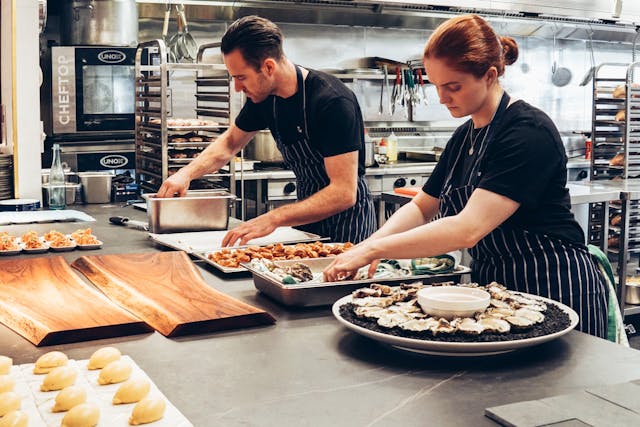The Importance of Inventory Management
Effective inventory management is the backbone of any thriving restaurant. It involves the systematic tracking, ordering, and utilization of ingredients and supplies essential for day-to-day operations. By maintaining precise control over your inventory, you can:
- Minimize Waste: With accurate inventory tracking, you can identify excess stock and minimize wastage, thereby reducing costs and maximizing profits.
- Ensure Freshness: Proper inventory rotation ensures that ingredients are used before they expire, maintaining the quality and freshness of your dishes.
- Streamline Operations: By knowing exactly what you have on hand, you can streamline purchasing processes, avoid stockouts, and optimize storage space.
- Enhance Profitability: Efficient inventory management directly impacts your bottom line, allowing you to allocate resources wisely and increase overall profitability.
Best Practices for Restaurant Inventory Management
Now that we understand the significance of inventory management, let’s explore some best practices to help you master this crucial aspect of restaurant operations:
- Implement a Robust System: Choose a reliable inventory management system that suits the specific needs of your restaurant. Whether it’s a digital software solution or a manual tracking system, ensure it offers features such as real-time updates, barcode scanning, and customizable reporting.
- Regular Inventory Audits: Conduct frequent inventory audits to maintain accuracy and identify discrepancies. Schedule these audits during off-peak hours to minimize disruption to service.
- Set Par Levels: Establish par levels for each ingredient based on historical consumption patterns and sales forecasts. This ensures you always have adequate stock on hand without overstocking.
- Utilize First-In, First-Out (FIFO) Method: Adopt the FIFO method to ensure older inventory is used before newer stock. This practice prevents spoilage and maintains product freshness.
- Vendor Relationships: Cultivate strong relationships with your suppliers to negotiate favorable terms, secure competitive pricing, and ensure timely deliveries. Regular communication with vendors helps prevent shortages and facilitates smooth transactions.
- Train Staff: Provide comprehensive training to your staff on proper inventory management procedures. Empower them to accurately record usage, handle perishable items, and communicate inventory needs effectively.
- Monitor Trends: Stay informed about industry trends, seasonal fluctuations, and customer preferences to adjust your inventory accordingly. This agility enables you to capitalize on emerging opportunities and adapt to changing market demands.
Tips for Optimization
In addition to best practices, here are some tips to further optimize your restaurant inventory management:
- Utilize Technology: Embrace technology to automate repetitive tasks, track inventory in real-time, and generate actionable insights. Cloud-based inventory management systems offer scalability and accessibility, allowing you to manage inventory from anywhere, anytime.
- Forecast Demand: Leverage historical sales data and predictive analytics to forecast demand accurately. This proactive approach minimizes overstocking and ensures you have the right inventory levels to meet customer demand.
- Monitor Food Costs: Keep a close eye on food costs by tracking prices, portion sizes, and recipe yields. Analyze cost variance reports regularly to identify areas for cost savings and menu optimization.
- Opt for Sustainable Practices: Embrace sustainable practices by minimizing packaging waste, sourcing locally grown ingredients, and adopting eco-friendly packaging solutions. Not only does this appeal to environmentally conscious consumers, but it also reduces your carbon footprint and enhances brand reputation.
In Conclusion
Mastering the art of restaurant inventory management is a continuous journey of refinement and optimization. By implementing best practices, leveraging technology, and staying attuned to market dynamics, you can achieve greater efficiency, profitability, and customer satisfaction. Remember, effective inventory management isn’t just about managing stock—it’s about delivering exceptional dining experiences one ingredient at a time. Cheers to your culinary success!
Whether you’re a seasoned restaurateur or a budding chef, the principles of effective inventory management apply universally. By embracing these strategies and incorporating them into your daily operations, you can set the stage for culinary excellence and ensure your restaurant thrives in an ever-evolving industry.


